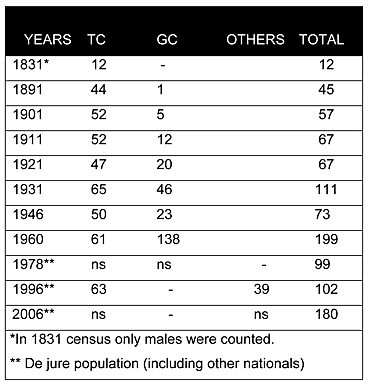

During the Ottoman period, Peristeronari was a Muslim village. In 1891, apart from one person, the village was again solely inhabited by Muslims. Throughout the British period the Greek Cypriot population of the village grew significantly, while the Turkish Cypriot population fluctuated and eventually stagnated. By 1960, the Greek Cypriot share of the village’s population rose to 69%.
Displacement:
During the intercommunal fighting of 1963-64, all the Turkish Cypriots fled the village and sought refuge in the Lefka/Lefke(060) enclave. After 1968, one-third of the Turkish Cypriot inhabitants returned. In 1971, Richard Patrick recorded only 27 Turkish Cypriots still living in the village. In August 1974, the entire Greek Cypriot population fled the village from the advancing Turkish army. Currently, like the rest of the displaced Greek Cypriots, the Greek Cypriots of Peristeronari are scattered throughout the island’s south, with concentrations in towns. The number of Peristeronari Greek Cypriots who were displaced in 1974 was approximately 150 (136 in the 1960 census).
Current Inhabitants:
Currently the village is mainly occupied by its original Turkish Cypriot inhabitants. In addition, after 1974, a few Turkish Cypriot families originally from Chrysochou/Altıncık(299) and some other various locations in the south were resettled there. There is also a small number of families from Turkey who settled in the village during 1976-77. The last Turkish Cypriot census put the village’s population at 180.
Websites: